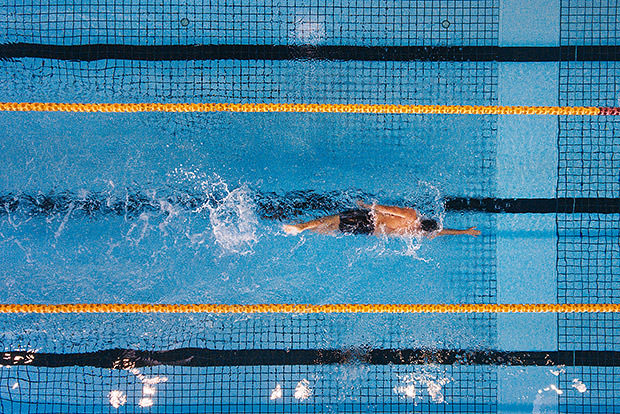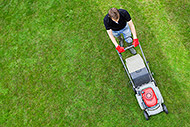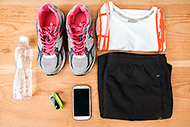
Swimming is a great low-impact workout that might help spice up a boring routine. If you’ve been thinking about adding swimming to your workouts, use these tips to get started.
Don't Overdo It On Gear
All you need to start swimming is a training swimsuit and goggles. Most people also prefer to wear a swim cap to keep hair dry and away from your face. A waterproof watch can be helpful but isn’t necessary if there is a clock at the pool to help you track your exercise time.
Start with the Basics
Begin by identifying your goals. Do you want to simply include swimming as another form of exercise, or do you have a long-term goal of competing in a triathlon? Once you know what you’d like to accomplish, familiarize yourself with the pool.
Consider taking an aquatics class or grabbing a kickboard to do simple laps when you start. Give yourself time to get acquainted with how it feels to exercise in the water and to learn what your fitness level will allow. When you are ready to start swimming laps, the standard freestyle stroke is the best place to begin. From there, you can determine if swimming freestyle for 30 minutes a few times a week is what you need to reach your goals or if you’ll need to become familiar with other strokes, speeds, and distances to compete in an event.
Find a Convenient Pool Time
If you aren’t comfortable with being in a crowded pool, plan to visit at different times throughout the day to find the least busy time to go. Most recreation centers and gyms have free swim times when the pool is not being used for lessons or classes. Experiment with completing your swim workouts early in the morning, taking a late lunch break, or later in the evening when group classes have ended.
Seek Out Basic Instruction
Swimming efficiently can be difficult to master. Be patient with yourself and take breaks as you need them. You can practice strokes and kicks on dry land before you hit the water to ensure you understand proper form. If you are entirely new to swimming, seek out a beginner class at your local recreation center or hire a swim coach to learn the basics and assess your performance in the water. Often, just a session or two can help you get the hang of things, and then you can return to solo workouts to apply what you learned.



 5 Ways to Burn 300 Calories this Weekend
5 Ways to Burn 300 Calories this Weekend
 The Best Home and Garden Chores for Burning Calories
The Best Home and Garden Chores for Burning Calories
 5 Tips for Making Exercise a Habit
5 Tips for Making Exercise a Habit
 Best Ways to Stay Safe during Exercise in Hot Weather
Best Ways to Stay Safe during Exercise in Hot Weather
 11 Tips for Exercise Motivation
11 Tips for Exercise Motivation
 Signs You Need to Increase Exercise Intensity
Signs You Need to Increase Exercise Intensity
 Mistakes to Avoid When Setting Fitness Goals
Mistakes to Avoid When Setting Fitness Goals
 Essential Gear for Starting an Exercise Program
Essential Gear for Starting an Exercise Program

 Pinterest
Pinterest RSS Feed
RSS Feed